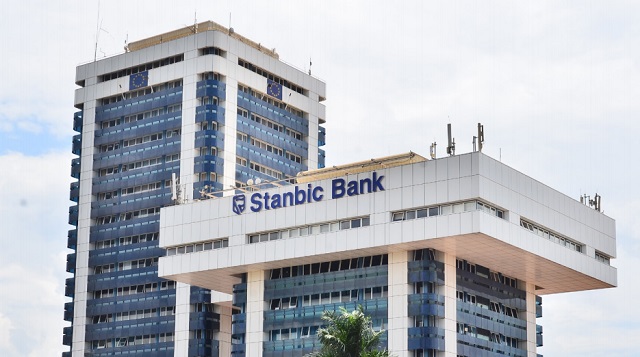
Borrowers took more loans in 2021 compared to a year before
Kampala, Uganda | THE INDEPENDENT | Uganda’s largest commercial banks reported a sharp growth in earnings in 2021, pointing to the recovery of the economy following its partial reopening.
However, some are worried about risks arising from inflation and geopolitical tensions in Europe and Asia.
Stanbic Uganda, Centenary Bank, Absa, Standard Charted Bank and Bank of Baroda all reported a sharp increase in net profits due to growth in private sector credit and repayment of loans that credit takers had initially postponed payments in the previous year.
But some bank executives see a complex future owed to the rising commodity prices, inflation and Russia-Ukraine war. There is heightened uncertainty in the financial markets due to the sanctions on Russia and anticipated tightening of monetary conditions by central banks in advanced economies to contain escalating inflation.
Such fears, experts say, could drive financial flows from frontier markets like Uganda to the safe-haven U.S. dollar assets, thereby weakening Uganda’s exchange rate.
The surge in commodity and energy prices, for instance, could see the Bank of Uganda tighten the central bank rate to tame inflation. Currently inflation remained tightly controlled at below the medium-term (2 – 3 years) target of 5%.
But the central bank forecast a revision in the outlook for inflation, with annual headline and core inflation now forecast to average 5.2% and 4.7% far above the 4.5% and 3.9% respectively, in the February forecast round.
“In the medium-term, inflation is projected slightly above the target,” said Michael Atingi-Ego, deputy governor, Bank of Uganda, as the initial impact of the recent price hikes has not spread across the basket of consumer goods and services.
The BoU’s decision to lower the central bank rate to 6.5% last year – the lowest ever in the country’s history – has seen commercial banks generate most of their income from non-interest activities.
Stanbic Uganda Holdings Limited, for instance, saw its net profits grow by 11% in 2021 to earn Shs269billion driven mainly by strong growth in non-interest income earned by mostly Stanbic Bank Uganda Limited, its anchor subsidiary.
Net interest income for the year grew marginally by 1.5% to Shs498bn during the period due to slow growth in customer loans and lower margins related to the coronavirus induced lockdowns.
Centenary bank reported a 31% jump in net profits to Shs211bn riding on money and security markets as well as loans and advances that grew marginally from Shs 1.9trillion to Shs 2.2trillion.
Other lenders that published their financials earlier reported growth in profits. Absa indicated that its profits grew by 169% to see the bank get a Shs110 billion profit after tax. Its Managing Director, Mumba Kalifungwa, said the bank also delivered a 15.4% growth in revenue to Shs365billion which indicated a Shs49 billion, customer gross loans stood at Shs1.437trillion and the total balance sheet grew by 13.1% to Shs4 trillion.
Absa reported a 169% growth in net profit to Shs 110bn boosted by a significant drop in impairment as more customers who had previously been hit with the coronavirus pandemic repaid their outstanding loans.
Standard Chartered Bank, too, reported a 30% growth in net profit to Shs94billion but its assets reduced by 2.4% to Shs 3.7trillion. The lender also recorded a reduction in customer deposits to Shs2.4trillion as loans and advances also reduced by 1.9% to Shs1.222trillion during the period under review.
Standard Chartered Bank acting Managing Director, Godfrey Sebaana, said “the momentum on the balance sheet was impacted by the significant slowdown in business activity due to steps taken to avert the deadly Covid19 pandemic.”
“The bank reviewed its participation in certain sectors that presented heightened credit risk and at the same time reviewed pricing proposals for deposits considering the extremely low rates environment.” Sebaana added.
Sebaana is optimistic that future performance will improve due to increased economic activities at full reopening of the economy.
Bank of Baroda saw its net profit increase by 8.08% to Shs 90.05bn during the period under review with the interest income and non-interest income contributing equally to the profitability.
But dfcu Bank, saw its profits fall 46% to Shs13.2billion due to the increase in non-performing loans but management believes that the recovery of economy that had been battered by coronavirus pandemic will reverse the trend.
This is the lowest profit ever recorded in more than a decade since 2008 when it earned Shs13.1billion. The lender’s NPL increased from Shs94billion in 2020 to Shs274billion in 2021 as a result of negative impacts of the coronavirus pandemic.
In addition, the bad debts written off increased from Shs13.9billion to Shs37.5billion as loan exposures increased from Shs351billion to Shs480billion during the same period.
DTB bank nearly doubled its profit from Shs16.7billion in 2020 to Shs31billion 2021 citing enhanced corporate governance framework and internal controls and processes, product offering and pricing and refreshed their service delivery channels to better meet expectations of their clients and stakeholders.
Smaller banks, too, reported growth in profits amidst the tough operating environment. For instance, PostBank, which got its Tier 1 license at the end of last year, recorded a 22% net profit to Shs12.5billion as the west African-based Guaranty Trust Bank saw its profits increase from Shs2.9bn to Shs5.3bn.
Bank of India reported a 59% growth in net profit to Shs9.9billion citing growth in loans and advances, income on investment securities, fees and commission income and earnings from foreign exchange transactions.
Similarly, Exim bank emerged from red to post a Shs2bn profit compared to a loss of Shs6.7billion driven by increase in earnings from loans which increased from Shs23billion in 2020 to Shs25billion during the period under review.
The lender also recorded a sharp increase in earnings from government securities that more than tripled from Shs1billion to Shs3.2billion.
Surging loans
Whereas banks recorded more earnings in the non-interest income, they witnessed a surge in loans disbursed to the private sector due to a reduction in interest rates in line with an accommodative monetary policy stance by BoU that kept the CBR stable, at 6.5% during the year.
The sector loaned more than Shs16.6trillion in 2021 excluding last December compared to Shs15.8trillion in 2020, according to preliminary figures from the banking sector, demonstrating a sharp rebound in economic activities following reopening of the economy. The majority of the credit were disbursed to agriculture, manufacturing/industry, trade and infrastructure.
This credit uptake is in tandem with the Bank of Uganda monetary policy report released in December last year that indicated Private Sector Credit growth picked up in the quarter to October 2021, supported by an improvement in economic activity following the easing of lockdown measures.
Including loans disbursed by the Uganda Development Bank (UDB), PSC grew by an average of 10.3%, on an annual basis, in the quarter to October 2021, up from 9.2% in the quarter to July 2021.
After adjusting for the exchange rate changes, year-on-year growth in PSC averaged 11.0% in the quarter to October 2021 compared to 9.7% in the quarter to July 2021. Experts support the idea of banks’ lending more to the private sector because of the opportunities that it creates in terms of jobs and expansion of the economy.
During the year (2021), increased lending to key sectors coupled with improved economic activities and loan recoveries resulted into a much better performance for most players in the industry basing on the financial results that have so far been published.
Sector executives have attributed the good performance of their entities to among other things, adoption of further tools of technology, good relationships with their clients and risk management.
****
 The Independent Uganda: You get the Truth we Pay the Price
The Independent Uganda: You get the Truth we Pay the Price


